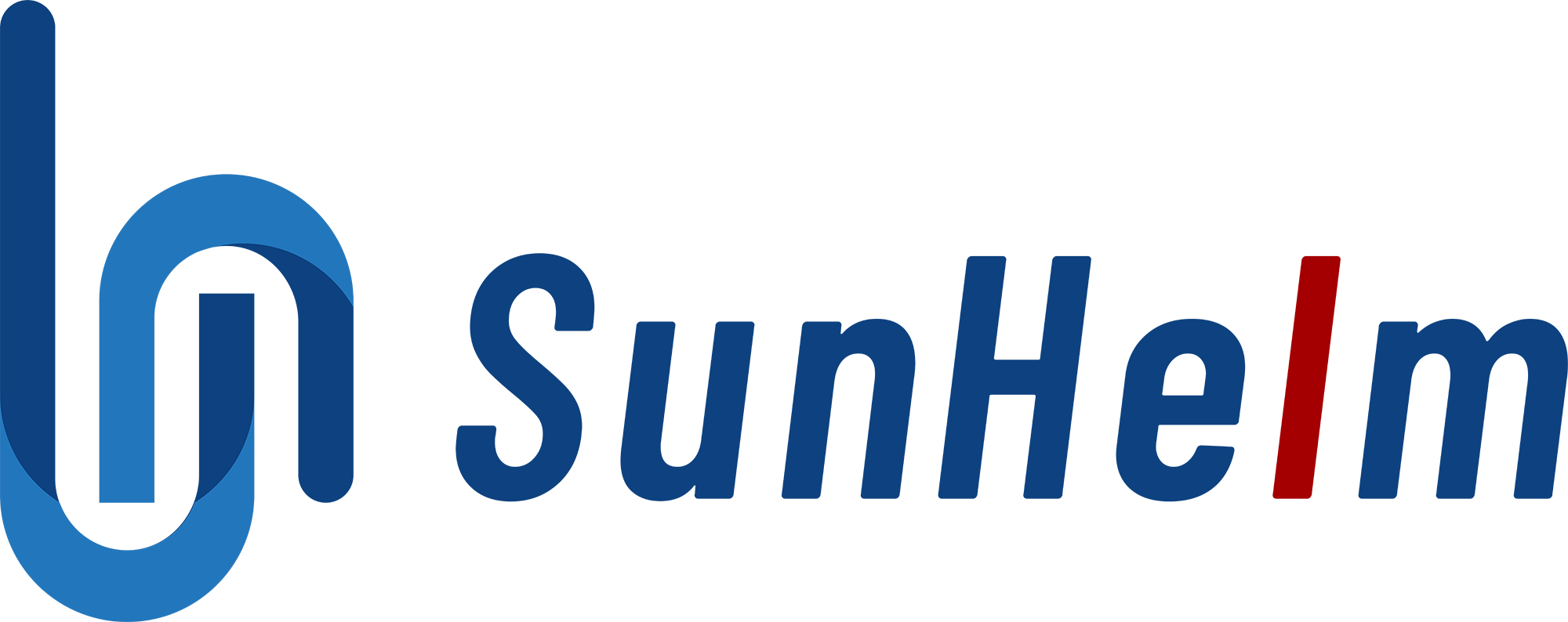Pendahuluan
Penambatan adalah proses mengamankan kapal ke titik tetap sehingga kapal dapat tetap berada di tempatnya dengan aman. Titik ini dapat berupa dermaga, dermaga, pelampung, atau struktur lainnya. Penambatan yang tepat sangat penting untuk kelancaran operasi kargo, keselamatan penumpang, dan melindungi kapal dan pelabuhan dari kerusakan.

1. 1. Konsep Dasar Penambatan
Ketika kapal tiba di pelabuhan, kapal harus dipegang dengan kuat melawan kekuatan angin, pasang surut, dan ombak. Tali tambat menghubungkan kapal ke titik-titik tetap di pantai atau ke struktur terapung. Tujuannya adalah untuk menjaga agar kapal tetap stabil untuk bongkar muat, atau pergerakan penumpang yang aman, sambil tetap memungkinkan kapal menyesuaikan diri secara alami dengan pergerakan air yang kecil.
2. Metode Penambatan Umum
Kapal menggunakan metode tambat yang berbeda tergantung pada ukuran, tata letak pelabuhan, dan kondisi setempat:
- Di samping tambatankapal berlabuh langsung ke dermaga atau dermaga.
- Tambatan ke kepala atau buritan ke tambatankapal berlabuh dengan haluan atau buritan menghadap ke pantai.
- Tambatan Titik Tunggal (SPM)biasanya untuk kapal tanker minyak di lepas pantai, yang terhubung ke pelampung atau terminal.
- Tambatan pelampungkapal diikat ke pelampung apung dengan beberapa tali.
- Tambatan lumba-lumbaikatan kapal pada pilar-pilar kuat yang terpisah yang ditempatkan di dalam air dekat tempat berlabuh.
Setiap metode memiliki kelebihan, tetapi semuanya memiliki satu prinsip yang sama: keamanan dan stabilitas adalah yang utama.
3. Operasi Penambatan Langkah demi Langkah
Proses penambatan biasanya meliputi:
- Persiapan - Awak kapal memeriksa tali tambat, derek, dan peralatan.
- Pendekatan - kapal tunda dapat membantu saat kapal memposisikan diri.
- Penanganan jalur - kru melempar atau menggunakan tali pengangkat untuk membawa tali tambat ke darat.
- Mengamankan - dipasang pada tonggak atau pengait dan disesuaikan untuk mendapatkan ketegangan yang tepat.
- Pemeriksaan akhir - Petugas memastikan bahwa kapal dalam keadaan stabil dan aman.
Komunikasi yang jelas antara kapal, kapal tunda, dan pekerja di darat adalah kunci dalam setiap langkah.
4. Peralatan Tambat (Bagian Fokus)
Penambatan membutuhkan seperangkat alat dan bahan khusus. Ini termasuk:
- Garis tambat: Tali atau kabel yang benar-benar menahan kapal.
- Tali kawat baja kuat tetapi berat dan kurang fleksibel.
- Tali sintetis seperti nilon, poliester, atau HMPE lebih ringan, lebih mudah ditangani, dan dapat menyerap energi.
- Derek dan kapstan: Mesin yang menarik dan menyesuaikan ketegangan pada saluran.
- Bitts dan tonggak: Tiang-tiang yang kuat di kapal dan di darat di mana tali-tali diamankan.
- Fairlead dan ganjalan: Pemandu yang mengarahkan garis dan mencegah kerusakan akibat gesekan.
- Kait pelepas cepat: Dipasang di darat untuk memungkinkan pemutusan cepat dalam keadaan darurat.
- Fender: Perangkat karet atau busa besar ditempatkan di antara kapal dan dermaga untuk menyerap benturan dan melindungi lambung kapal.
Setiap bagian dari peralatan berperan dalam menjaga kapal tetap aman. Jika satu bagian rusak-seperti tali yang sudah aus atau tonggak yang lemah-seluruh operasi tambat dapat berisiko. Untuk alasan ini, pelaut memeriksa perlengkapan secara teratur dan menggantinya jika diperlukan.
5. Faktor Lingkungan
Penambatan tidak pernah sama di setiap pelabuhan. Cuaca dan kondisi laut sangat penting:
- Angin dapat mendorong kapal ke samping atau menjauhi dermaga.
- Arus dan pasang surut mempengaruhi posisi kapal dan ketegangan garis.
- Ombak dapat menciptakan gerakan konstan, menekankan garis-garisnya.
Karena itu, kru menyesuaikan sudut garis, menambahkan pegas atau garis dada, dan meningkatkan margin keselamatan ketika lingkungannya keras.
6. Keselamatan dan Risiko Umum
Menambatkan tali adalah salah satu pekerjaan paling berbahaya di kapal. Tali yang putus dapat mencambuk kembali dengan kekuatan yang mematikan. Ini disebut dengan istilah efek jepret balik. Kru harus menjauhi zona snap-back, mengenakan perlengkapan pelindung, dan mengikuti perintah yang jelas. Pelatihan dan kesadaran menyelamatkan nyawa.
7. Rencana Penambatan dan Penilaian Risiko
Sebelum tiba, petugas menyiapkan rencana tambat. Ini termasuk:
- Pengaturan garis
- Kekuatan angin dan arus yang diharapkan
- Jumlah kapal tunda yang dibutuhkan
- Batas keamanan untuk operasi
Rencana yang dipersiapkan dengan baik akan mengurangi kesalahan dan memastikan bahwa setiap orang mengetahui peran mereka.
8. Situasi Khusus dan Jenis Kapal (Bagian Fokus)
Tidak semua kapal berlabuh dengan cara yang sama. Kapal dan operasi yang berbeda membutuhkan perhatian khusus:
- Tanker minyak dan pengangkut LNG: Kapal-kapal ini sering menggunakan sistem Tambat Titik Tunggal lepas pantai. Keselamatan sangat penting karena kargo yang mudah terbakar. Kapal tunda ekstra dan prosedur ketat berlaku.
- Kapal kontainer: Dengan sisi yang tinggi, mereka lebih terpengaruh oleh angin. Garis dada dan spatbor yang kuat diperlukan untuk menjaganya tetap stabil.
- Kapal Ro-Ro: Kapal-kapal ini memuat kendaraan melalui jalur landai. Tambatan harus menjaga sudut ramp tetap aman dan stabil.
- Kapal pesiar dan kapal kecil: Mereka menggunakan tali dan gerigi sederhana, namun tetap harus mempertimbangkan angin dan pasang surut.
- Cuaca ekstrem atau es: Dalam badai yang kuat atau kondisi es, kapal mungkin memerlukan tali tambahan, kapal tunda, atau bahkan menghindari tambatan sama sekali.
Dengan menyesuaikan metode dengan jenis dan kondisi kapal, kru kapal dapat mengurangi risiko dan meningkatkan efisiensi.
PERTANYAAN YANG SERING DIAJUKAN
1. Apa yang dimaksud dengan tambat dalam pelayaran?
Menambatkan kapal berarti mengamankan kapal ke titik tetap, seperti dermaga, dermaga, atau pelampung, sehingga kapal dapat tetap berada di tempatnya dengan aman.
2. Peralatan apa yang digunakan untuk menambatkan kapal?
Kapal menggunakan tali tambat, derek, bollard, bitt, fairlead, dan spatbor. Setiap bagian membantu menjaga kapal tetap stabil dan aman.
3. Apa perbedaan antara menambatkan dan menambatkan jangkar?
Menambatkan kapal ke titik tetap di pantai atau pelampung, sementara berlabuh menahan kapal di tempatnya menggunakan jangkar di dasar laut.
4. Mengapa menambatkan kapal berbahaya?
Risiko utama adalah efek snap-back. Jika tali putus, tali dapat mencambuk kembali dengan kekuatan besar, yang dapat melukai atau membunuh siapa pun yang berdiri di dekatnya.
5. Berapa banyak tali tambat yang dibutuhkan sebuah kapal?
Tergantung pada ukuran kapal, pelabuhan, dan cuaca. Kapal besar dapat menggunakan lebih dari sepuluh garis, termasuk garis haluan, buritan, dada, dan pegas.
6. Apa yang dimaksud dengan rencana tambat?
Rencana tambat adalah panduan yang menunjukkan bagaimana sebuah kapal akan ditambatkan. Rencana tambat ini mencakup posisi garis, kekuatan yang diharapkan, dan aturan keselamatan.


